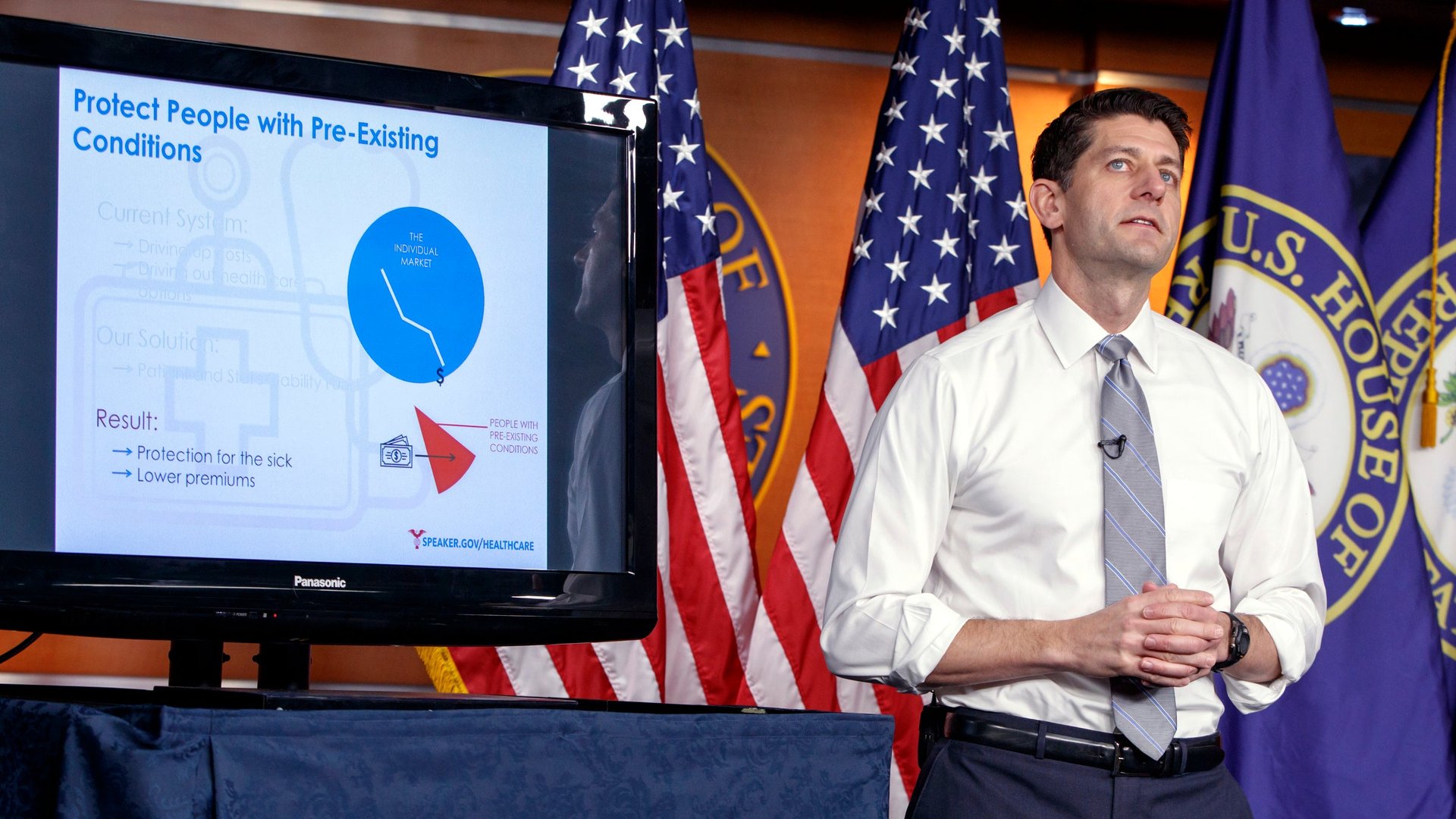The real reason Republicans are ramming through a health care bill that no one wants
It’s safe to say that the rollout of Trumpcare, the Republican plan to replace Obamacare, has not gone smoothly.


It’s safe to say that the rollout of Trumpcare, the Republican plan to replace Obamacare, has not gone smoothly.
For all the complaints about how the 2010 Affordable Care Act has shaped American health care, the various stakeholders in the US health care system—from hospitals to physicians to retirees to insurance companies to nurses—have said they don’t like the GOP’s plan to fix it.
Indeed, it’s hardly clear what problem this bill, known as the American Health Care Act, fixes. The current health care system has been criticized for not providing affordable options to middle-class purchasers of individual health insurance plans. But the Republican plan to replace subsidize marketplaces with refundable tax credits would shift costs to consumers in 48 US states, often by thousands of dollars, according to a Center on Budget and Policy Priorities analysis, and lead to tens of millions of Americans losing insurance coverage. And even that is seen as too generous by conservatives in the House, who don’t want the government to have any role at all in subsidizing health insurance.
Meanwhile, some moderate Republicans in the Senate are questioning whether this plan will preserve the expansion of Medicaid coverage for the very poor that has helped bolster health outcomes and rural hospitals. And their newly installed president promised expansions of affordable coverage to all Americans while out on the campaign trail.
Indeed, despite the political promises to end Obamacare, the story today is the story of the last six years Americans have spent waiting for the latter half of the Republican “repeal and replace” plan. The party doesn’t agree on a health care agenda because it simply doesn’t agree about whether the government has any role at all.
What they do agree on, however, is the importance of passing tax cuts. And what this bill, ostensibly intended to improve health care, does above all is tee up massive tax cuts for the wealthiest Americans.
A little Congressional trick called budget reconciliation
The challenge facing any effort to pass a large tax cut is that most controversial legislation must be passed by a supermajority (60) of lawmakers in the Senate. Just two moderate Republican senators would need to defect—a Susan Collins or a Rob Portman, say—to scuttle any big piece of legislation.
That is, unless lawmakers use a tool called budget reconciliation. That parliamentary procedure allows certain financial bills to pass by a simple majority of 50 plus one, in order to facilitate tricky budget legislation. Precisely because it is such a powerful tool, various rules prevent it from being used to change too much policy or, and this is important, increase US borrowing beyond the next 10 years.
The Affordable Care Act was passed through a reconciliation measure for a similar reason, mainly the political pressure on US senators to vote against such a major change in policy. The key is that it was fully paid for, thanks to various tax hikes and spending measures; technically, Americans have yet to borrow a dime to finance Obamacare. But if your reconciliation bill isn’t revenue-neutral, like a tax cut, it will have to sunset in 10 years.
This is how former US president George W. Bush passed his massive tax-cut package in the first term of his presidency, and why it expired in 2013, setting up a massive fiscal showdown as Democrats attempted—and ultimately were able—to roll back some of the tax cuts on the wealthy.
But Ryan and this generation of Republicans aim to avoid the fate of the Bush tax cuts. To do so, they’ll need to pass a reconciliation bill that is largely revenue-neutral. How will they get there with a plan to cut as much as $2.4 trillion in taxes over the next decade?
The expected approach is gaming the scores. And this year, Republicans will have the opportunity to do it twice, saying they plan to use the tool to kill Obamacare and implement tax reform. By passing a reconciliation bill that repeals most of Obamacare’s big spending and its revenue-raising measures—like the surcharge on the wealthy to fund Medicaid expansion or a special tax on medical devices—while maintaining its cuts in Medicare, the bill would reduce expected revenue by $600 billion, without changing the deficit. That tax cut alone would be a big win. But it only tees up the next set.
“That in turn means that if Republicans bring a second reconciliation bill to cut taxes, they will be judged against a revenue baseline that is already $600 billion lower than expected,” is how Yuval Levin put it at National Review. ”And the second reconciliation bill, by providing some tax credits for insurance to lower-income people at the same time it enacted corporate and personal income-tax cuts, would improve the distribution tables of the Republican tax reform, making its benefits less skewed toward higher-income people.”
A “once-in-a-lifetime opportunity” for Republicans
It may seem that the $600 billion window won’t be enough to cover up $2.4 trillion worth of tax cuts. But another change that Republicans have put in place will give them just enough wiggle room. Under the Republican Congress, bills can now be scored based on their “dynamic effects”—how they would change the economy, and thus the amount of revenue earned by the government. Dynamic scores of tax cuts can generate major gains if the people doing them assume that the cuts will goose economic growth. Some conservative groups estimate that the $2.4 trillion tax cut will actually cost just $200 billion to $450 billion—just enough to squeak in without a sunset provision.
Ryan has been telling his colleagues that this is a “once-in-a-lifetime opportunity.” He’s likely right about that. But voters and lawmakers alike should carefully examine what this opportunity entails.